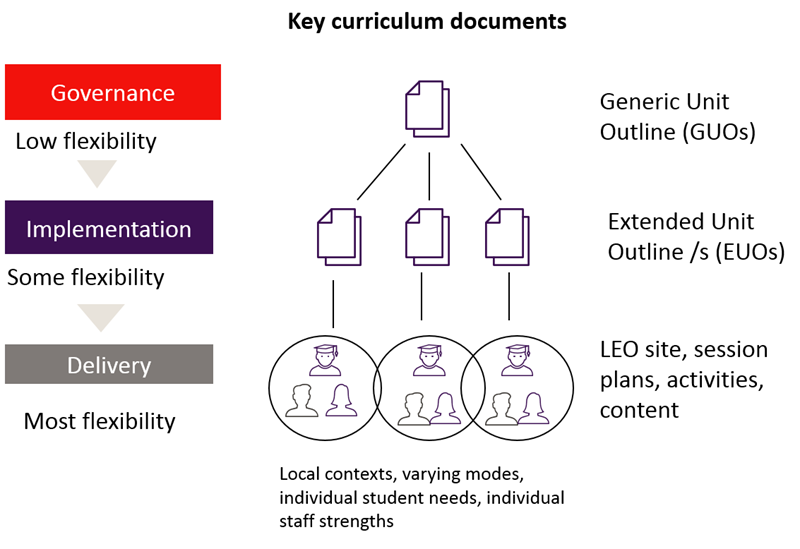This resource provides you with an introduction to the National Curricula Framework that guides the delivery of national units at ACU. It overviews the three tiers of the framework: Governance, Implementation and Delivery.
This resource provides you with an introduction to the National Curricula Framework that guides the delivery of national units at ACU. It overviews the three tiers of the framework: Governance, Implementation and Delivery.
Overview
On this page
Curriculum Flexibility National Curricula FrameworkProviding students with the opportunity to achieve the learning outcomes is the overarching aim of all curricula.
The National Curricula Framework is delivered through the key curriculum documents. Each tier of the curriculum is implemented through the relevant key curriculum document.

The National Curricula Framework, as outlined in the table below, provides guidance on how to provide students with the opportunity to achieve the learning outcomes with reference to:
Tier |
Governance |
Implementation |
Delivery |
Limited flexibility |
Some flexibility |
Most flexibility |
|
What is the purpose of this tier?
|
The governance level is the framework that is approved by accreditors, TEQSA and the university across a program. Programs are developed in consultation with key stakeholders. This level ensures that key considerations are integrated across programs |
The implementation level is about operationalising the governance level. There’s a clear articulation of expectations of student and staff. |
The delivery level allows for engaging students in activities to achieve learning outcomes. Individual practices and variances can be accommodated here provided the opportunity to achieve the same learning outcomes. |
Who is usually involved at this level?
|
|
|
|
What are the key curriculum documents?
|
|
|
|
Stable aspects
|
|
|
|
Opportunities for flexibility
|
Changes can be made to generic unit outlines by going through a formal process. There are consultative committees and accreditation considerations. |
|
|
Reasons for variance
|
|
|
|
Considerations
|
|
|
|
Visit Service Central to access Corporate Services.